Stumbling across a massive fruiting of fairy inkcap mushrooms is truly a spectacle to the senses. The massive, 100’s deep clusters of delicate, small, bell-shaped caps are straight out of fairyland – hence, the popular name for this mushroom. Fairy inkcaps (Coprinellus disseminatus) are technically edible, but their tiny size makes them not much worth foraging. Instead, take some time to admire these fungi and their astonishing showing.
- Scientific Name: Coprinellus disseminatus, Pseudocoprinus disseminatus is a synonym.
- Common Names: Fairy Inkcaps, Fairy Bonnets, Trooping Crumble Caps, Non-Inky Coprinus, Little Helmets
- Habitat: Rotting stumps and logs
- Edible: Edible but not commonly foraged
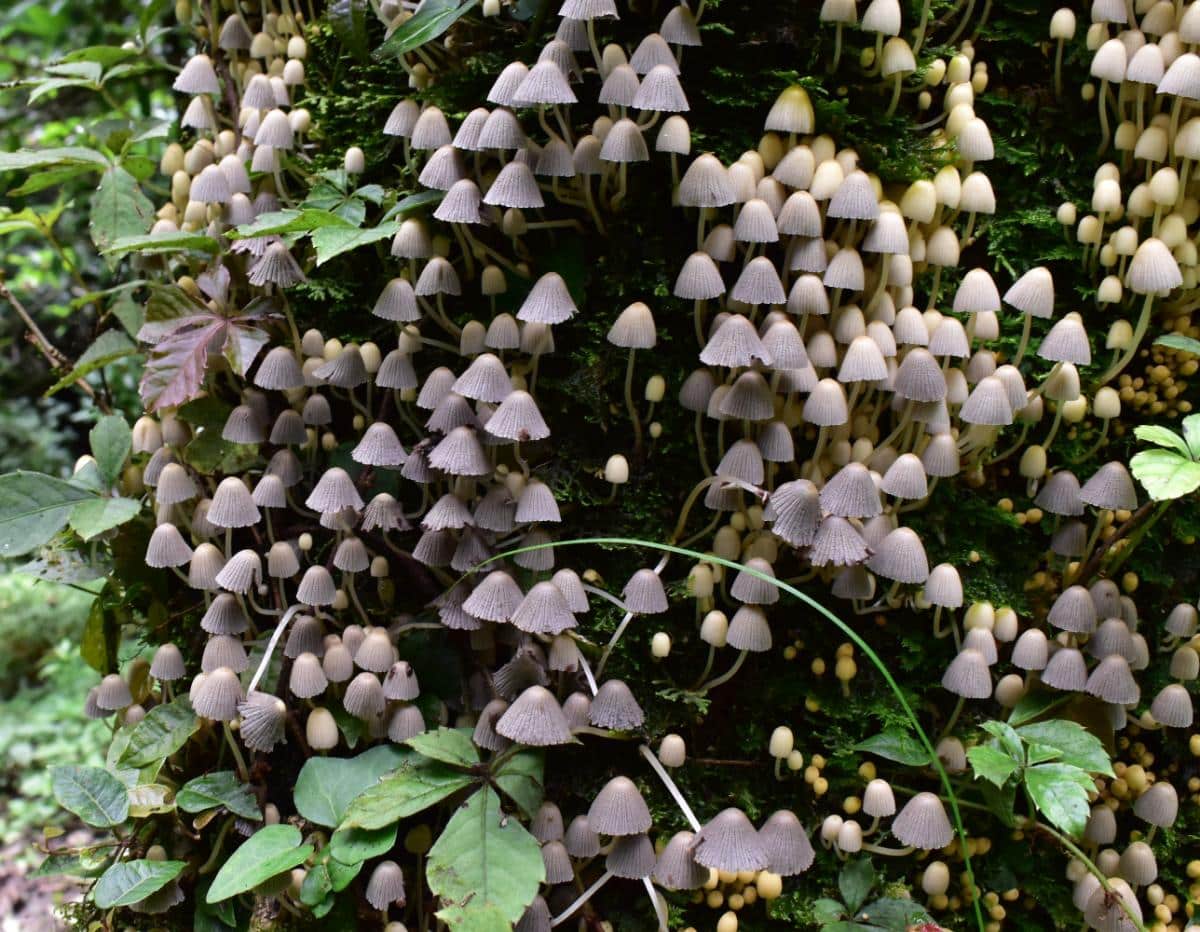
Jump to:
All About Fairy Inkcaps
The fairy inkcap goes by many other names, including Fairy Bonnets, Trooping Crumble Caps, or Non-Inky Coprinus. Unlike many other inkcap species, the gills of the fairy inkcap do not dissolve into an inky fluid with age. This process, known as deliquescing, is commonly associated with inkycaps since the gills turn into a black, inky-looking liquid. But the fairy caps do not do this.
The fairy inkcap was initially described by Christiaan Hendrik Persoon, a renowned mycologist of the late 18th and early 19th centuries. The mushroom was later given its current scientific name, Coprinellus disseminatus, in 1939 by the Danish mycologist Jakob Emanuel Lange.
The genus ‘Coprinellus‘ is closely related to fungi in the primary inky cap genus Coprinus. Coprinus translates to ‘living on dung,’ but the fairy inkcap shirks this association, feeding on rotting wood rather than dung. The suffix –ellus at the end of the genus name explains this is smaller than mushrooms in the main Coprinus genus. The epithet disseminatus is derived from the Latin word ‘disseminare,‘ meaning ‘to disperse’ or ‘to propagate,’ an apt descriptor for the mushroom’s prolific growth habit.
This species has approximately 143 different mating types!
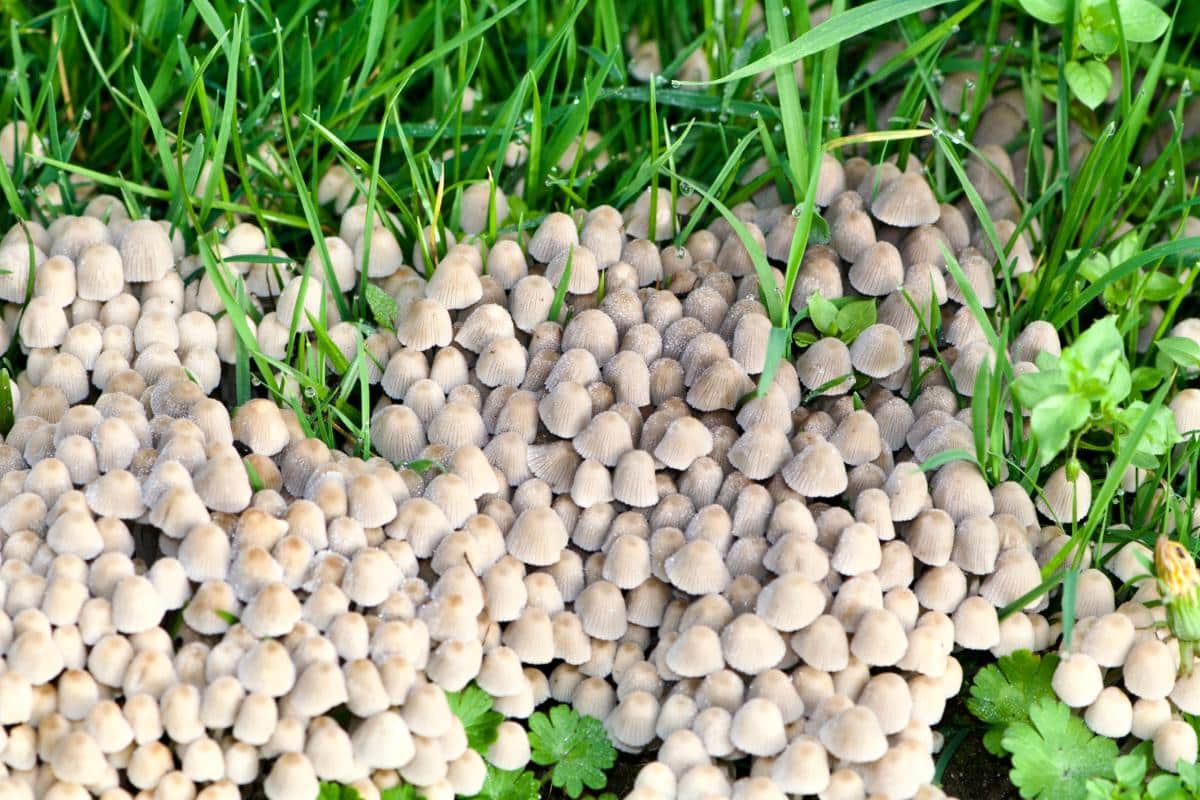
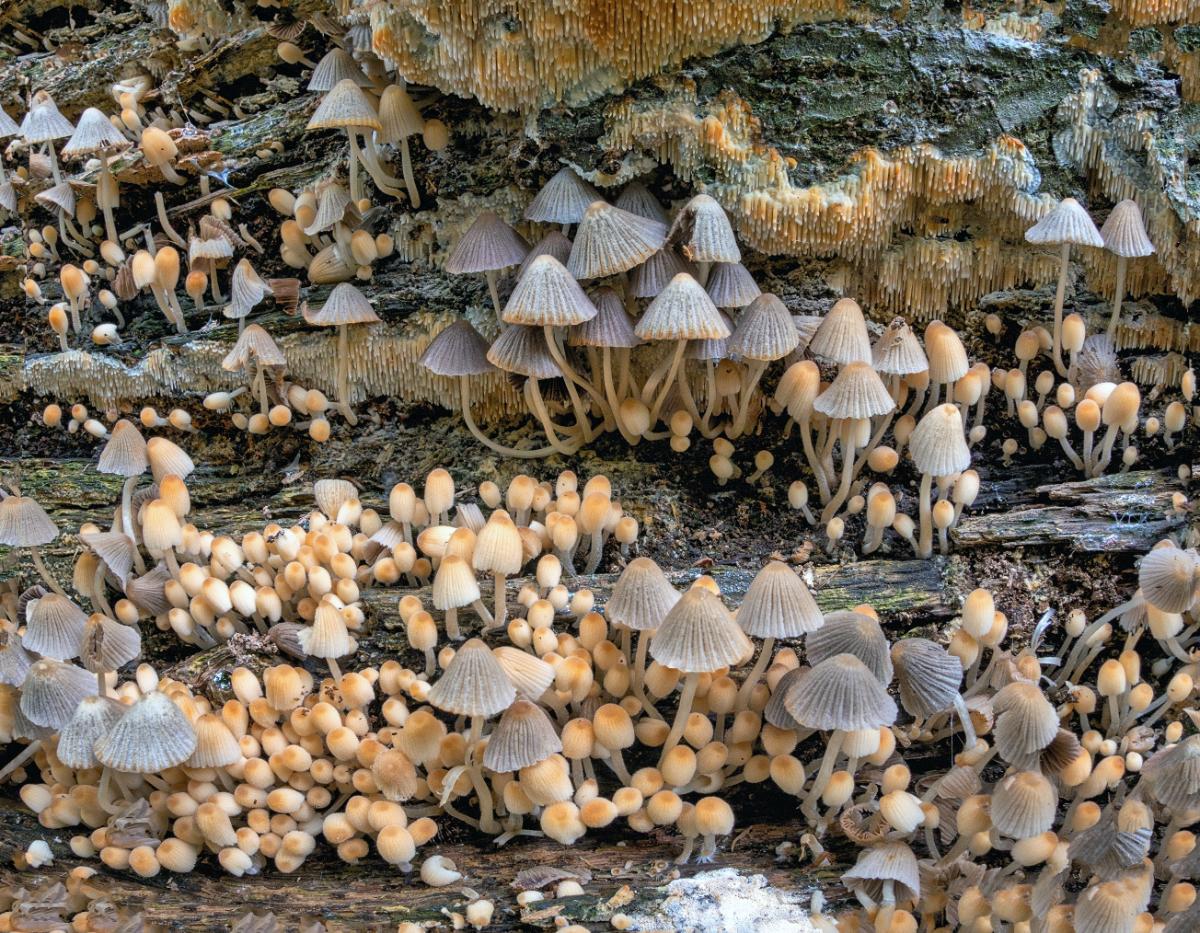
Fairy Inkcap Mushroom Identification Guide
Season
This mushroom species occurs from early spring until the onset of winter.
Habitat
The fairy inkcap is a saprobic mushroom that feeds on decaying organic matter. It is commonly found growing in enormous clusters on and beside stumps and other forms of rotting wood. It’s not uncommon to find them fruiting together in the thousands!
Each mushroom is it’s own growth — there are no shared stems or bases. Every fairy inkcap is an individual specimen even though there may be hundreds or thousands of them all together. This mushroom is primarily found on rotting wood, tree stumps, and decaying wood debris, particularly in coniferous forests.
Urban Adaptation: These mushrooms thrive in urban settings, too, appearing in gardens, grasslands, and disturbed sites, including roadsides. Always, though, they are growing from some type of wood debris.
Fairy ink caps have a short life, sometimes only showing for a few days and then disappearing completely like they were never there. Appreciate them while they’re there!
The fairy inkcap is a cosmopolitan mushroom found in Britain, Ireland, throughout Europe, North America, most parts of Asia, South America, and Australia.
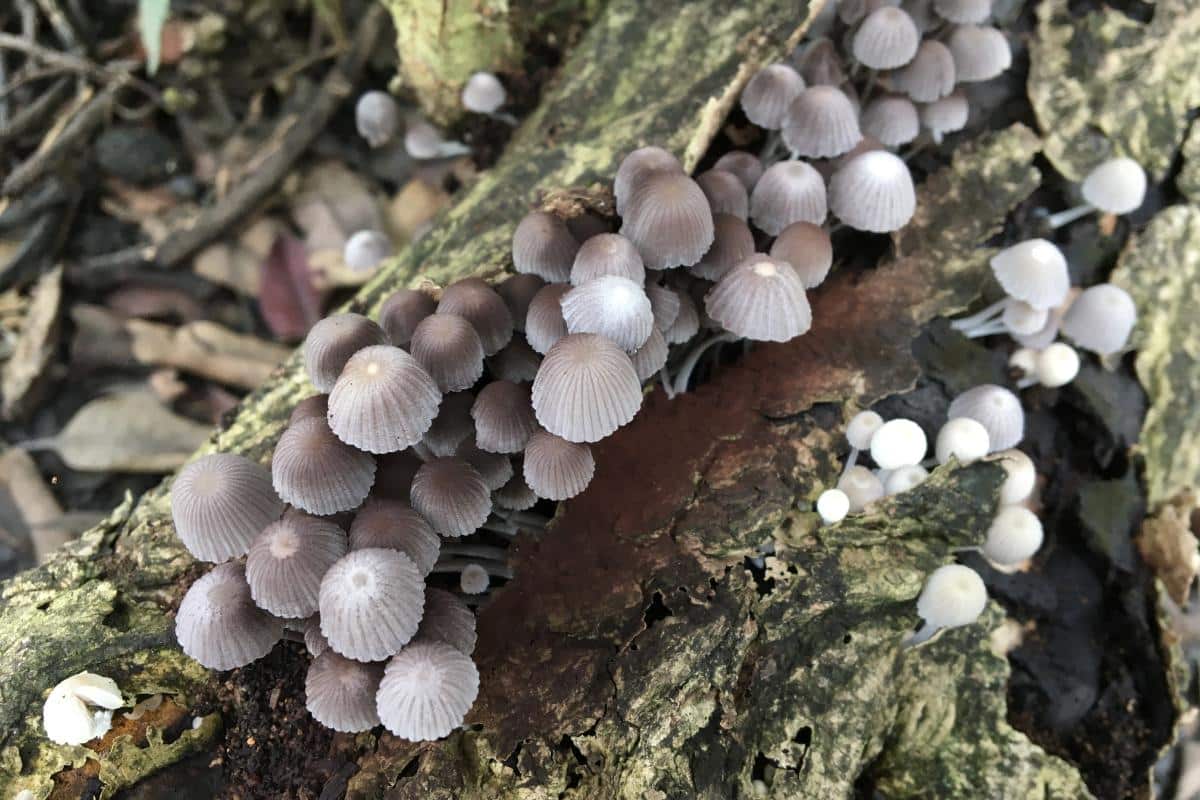
Identification
Cap
The cap of the fairy inkcap is typically 0.2 to 0.6 inches in diameter. Initially, the cap is egg-shaped, then changes to bell-shaped to umbrella shaped (a teeny tiny fairy umbrella, that is!). The young caps are white or beige in color with a brownish center. They are lighter colored at the edges. As the mushroom matures, the cap turns grey and then blackens somewhat around the edges.
The cap is deeply vertically lined around the edges, almost all the way to the center of the cap. This
Gills
The gills of this mushroom are adnate, meaning they are attached to the stem. Sometimes, though, they are free from it. They start out white, then turn grey, and finally blackish as the spores mature. Unlike many other inkcap species, the gills of the fairy inkcap do not dissolve into an inky fluid, a process known as deliquescing.
Stem
The fairy inkcap’s stem is thin, hollow, and very fragile. It measures about 0.6 to 1.2 inches tall and is very narrow. The stem is white and can be straight or slightly bent at the base. It is usually covered by tiny white hairs.
Flesh and Odor
The flesh of this mushroom is very thin and fragile. It does not have a distinctive odor.
Spore Print
The spore print of the fairy inkcap is black or blackish brown.
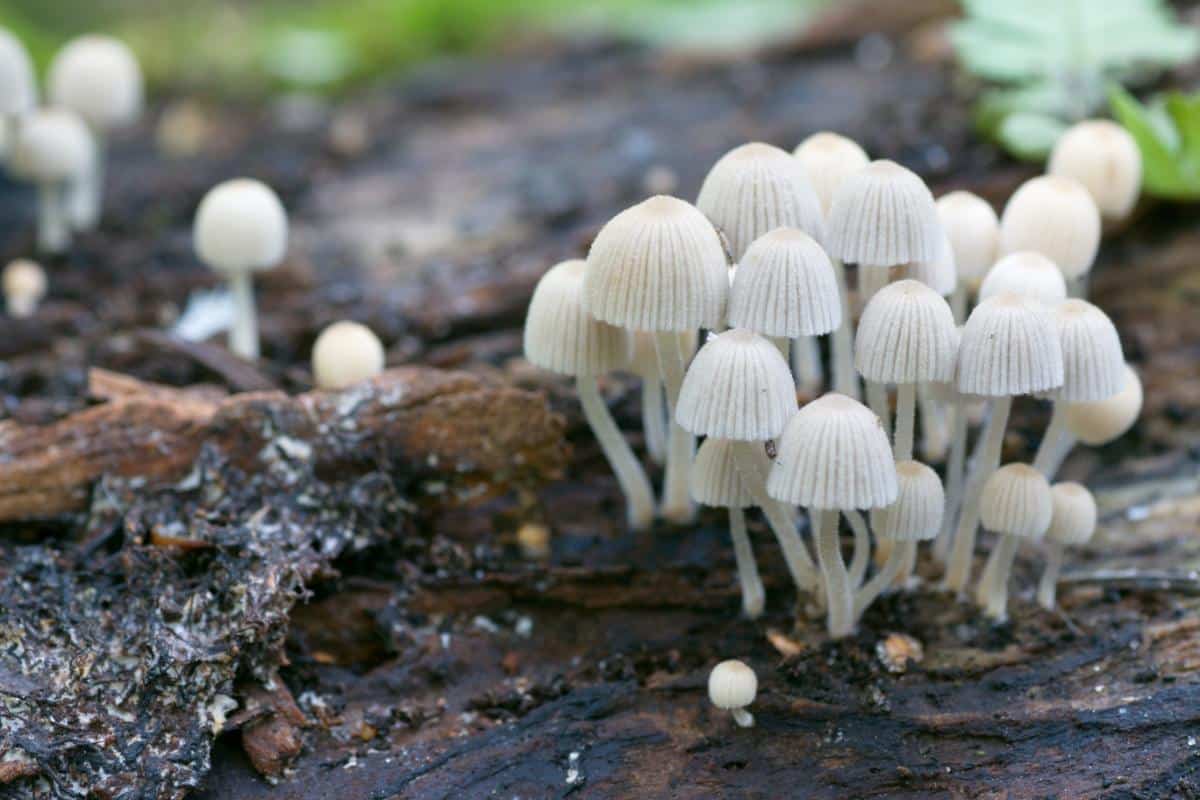
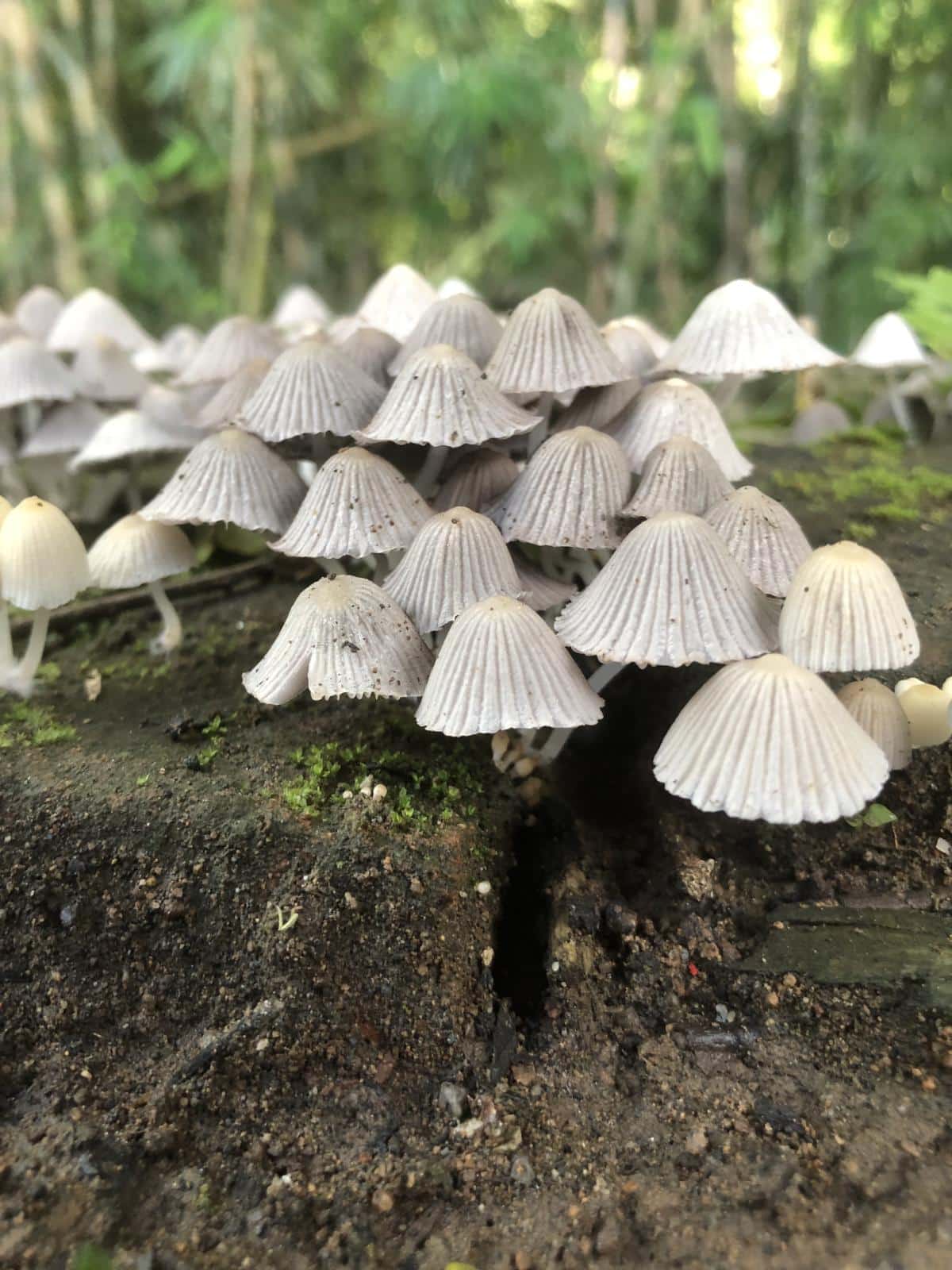
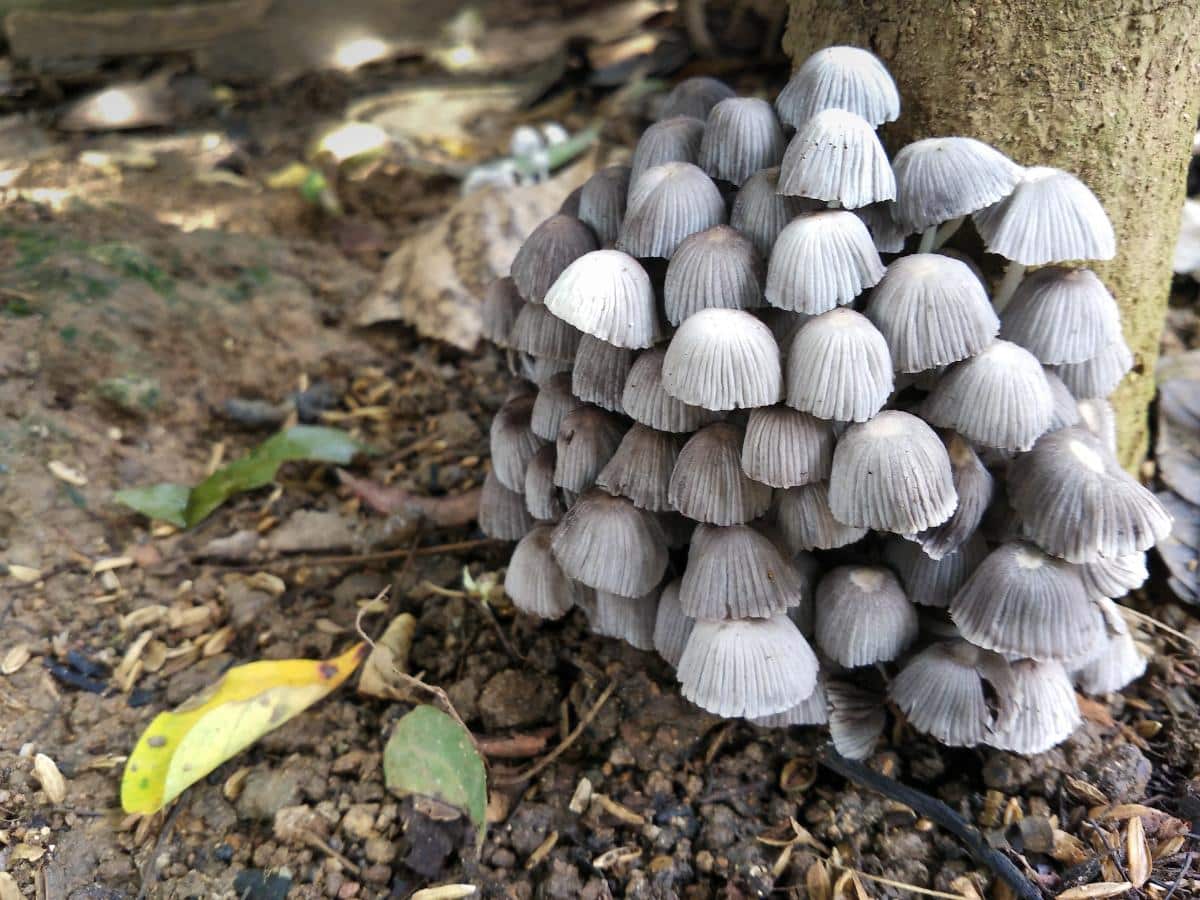
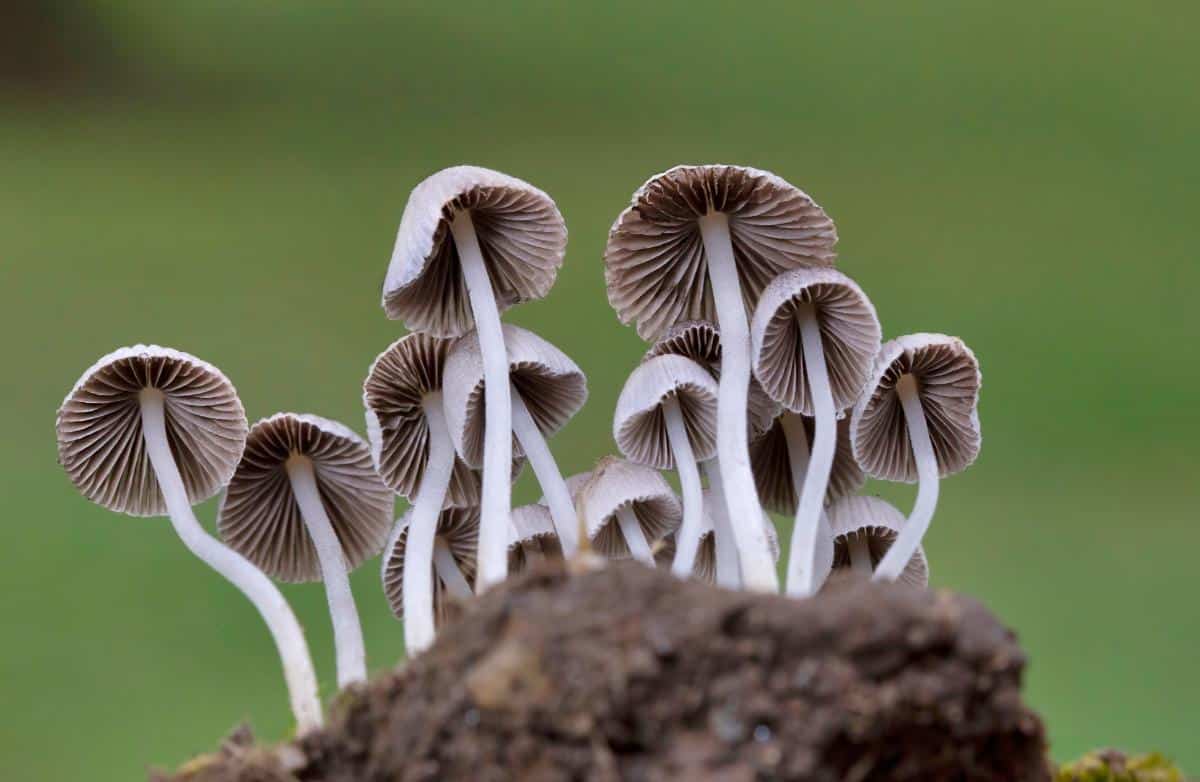
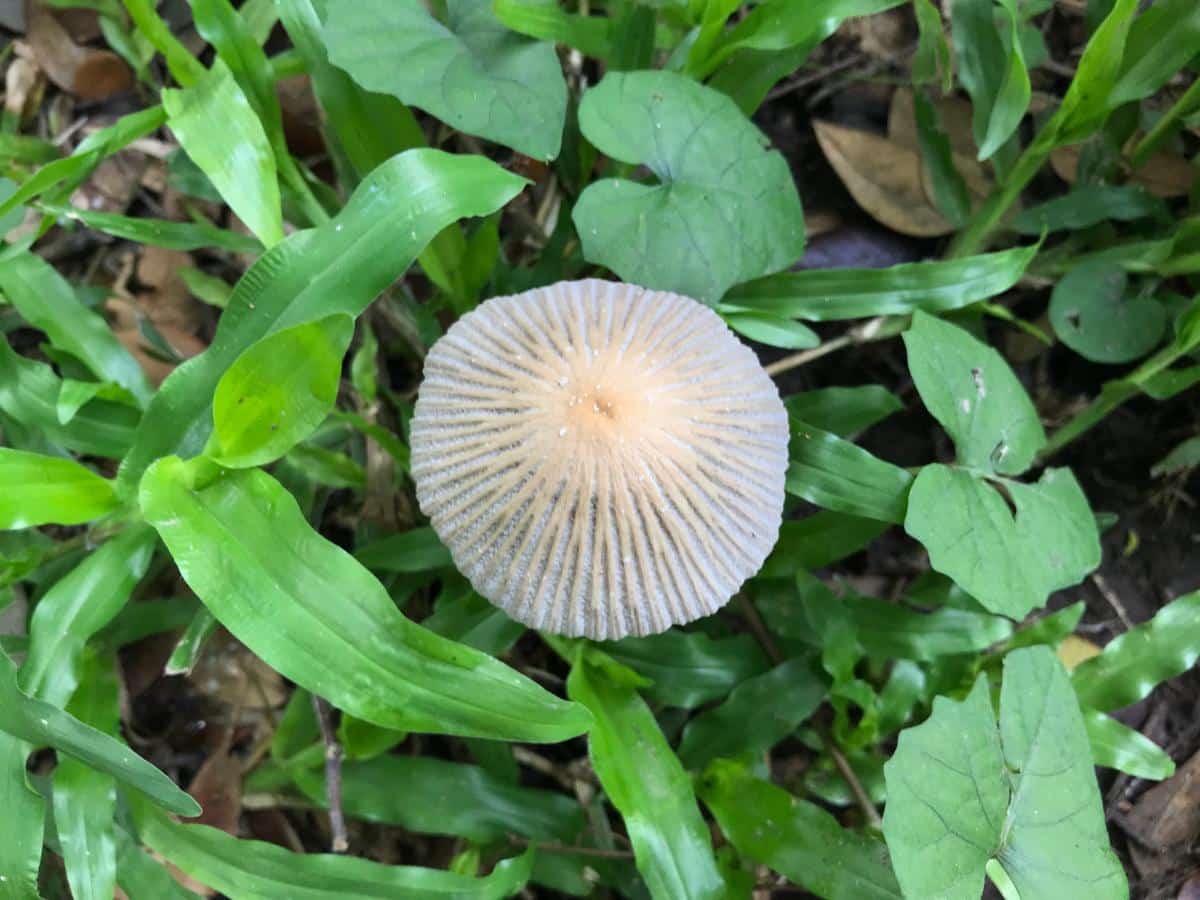
Fairy Inkcap Lookalikes
There are quite a few other inky caps and parasol species that share a resemblance with the fairy inky caps. However, there are several key identifying points that make it easy to differentiate from all the other lookalikes:
- It’s an inky cap (dark gills, black spore print)
- Tiny, tiny size
- Grows on chunks of wood with a preference for tree stumps
- Fruits in incredible numbers
- Non-liquefying gills
Glistening Inkcap/Mica Cap (Coprinellus micaceus)
This species also grows in tufts but rarely in such massive groups. When young, it has larger, tan caps covered in tiny glistening veil fragments. It is widespread across North America and a common sight in spring and fall. This inky cap species is edible without any issues; it does not contain coprine.
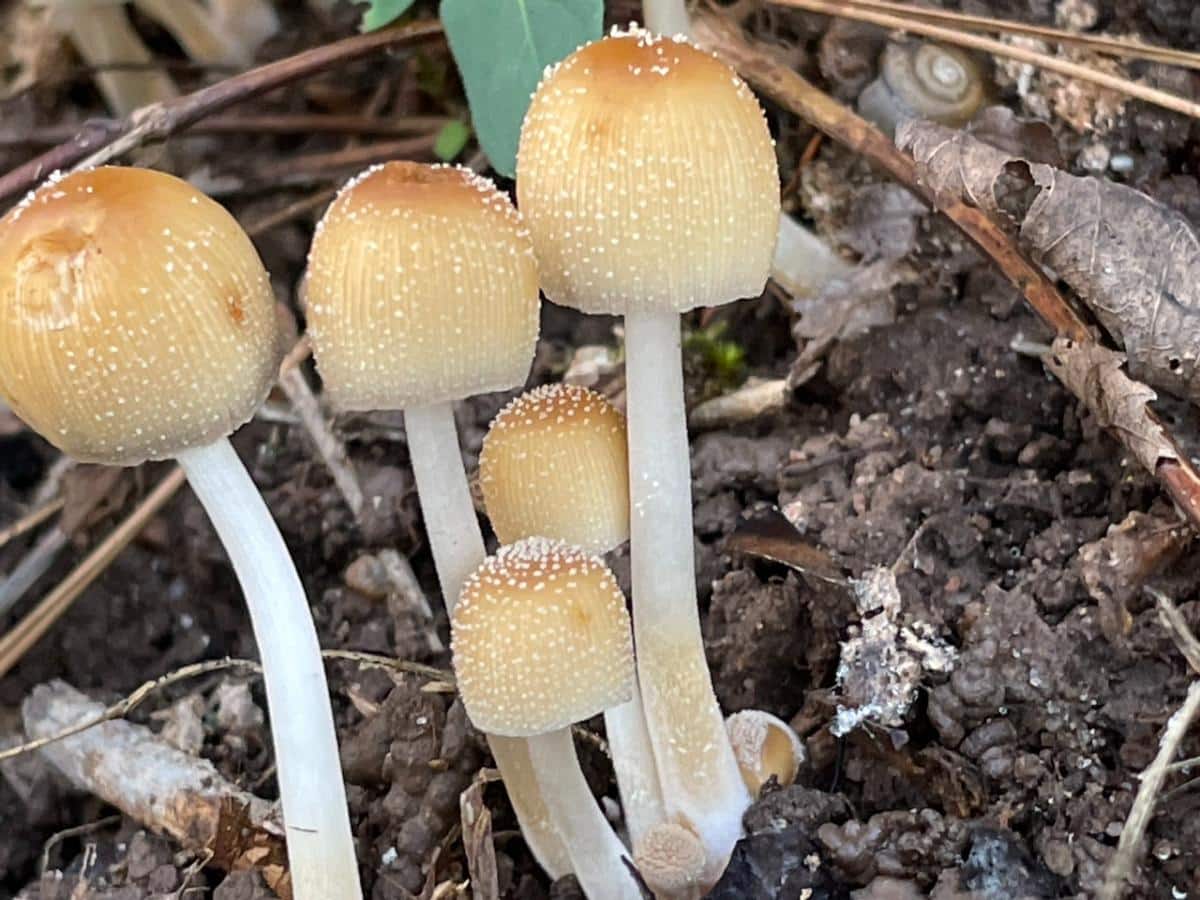
Harefoot mushroom (Coprinopsis lagopus)
This widespread inky cap species features a very densely hairy cap. The underlying cap color is gray or black, and the hairs are silvery. As the cap expands, the silver hairs break up to create patches. The hairs may disappear completely when the mushroom is fully mature.
This species is larger than the fairy inkcap and the silvery scales are a clear clue it is different. This one is edible but so small, with thin flesh, that, like the fairy inkcap, it isn’t considered worthwhile.
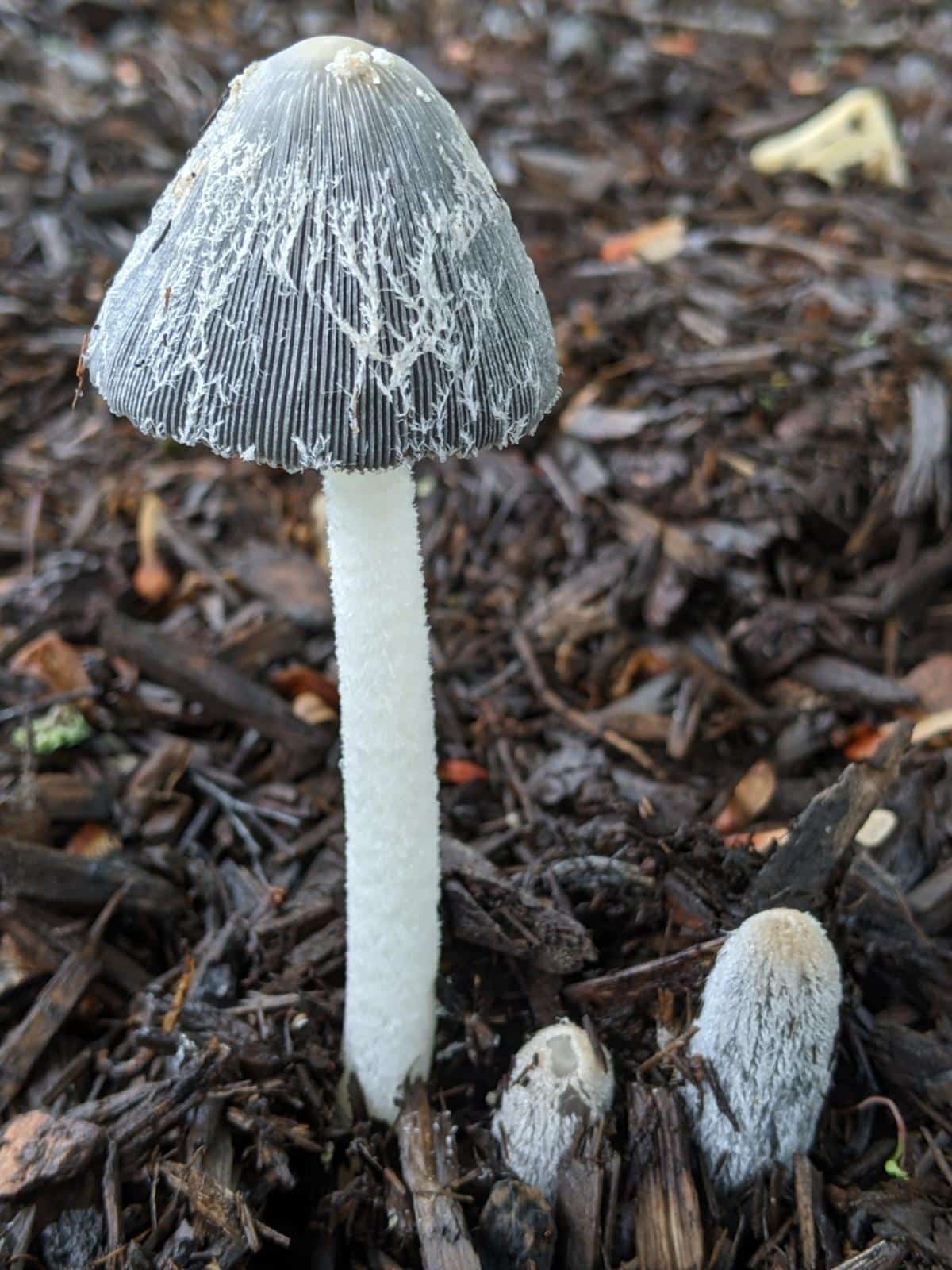
Scaly inky cap (Coprinopsis variegata)
The scaly ink cap (or feltscale inky cap) features whitish or yellowish scales on its cap. As the mushroom matures, the scales flake off to reveal a grayish undersurface. It is when it is mature and gray that it may be confused with the fairy inkcap.
The stem is white and often has a cotton-like ring around it. It is thick, hollow, and also white — different from the fairy inkcaps thin, hollow, white stem. These mushrooms are also significantly bigger than the fairy inkcaps Scaly inky caps appear almost exclusively in June and July east of the Great Plains.
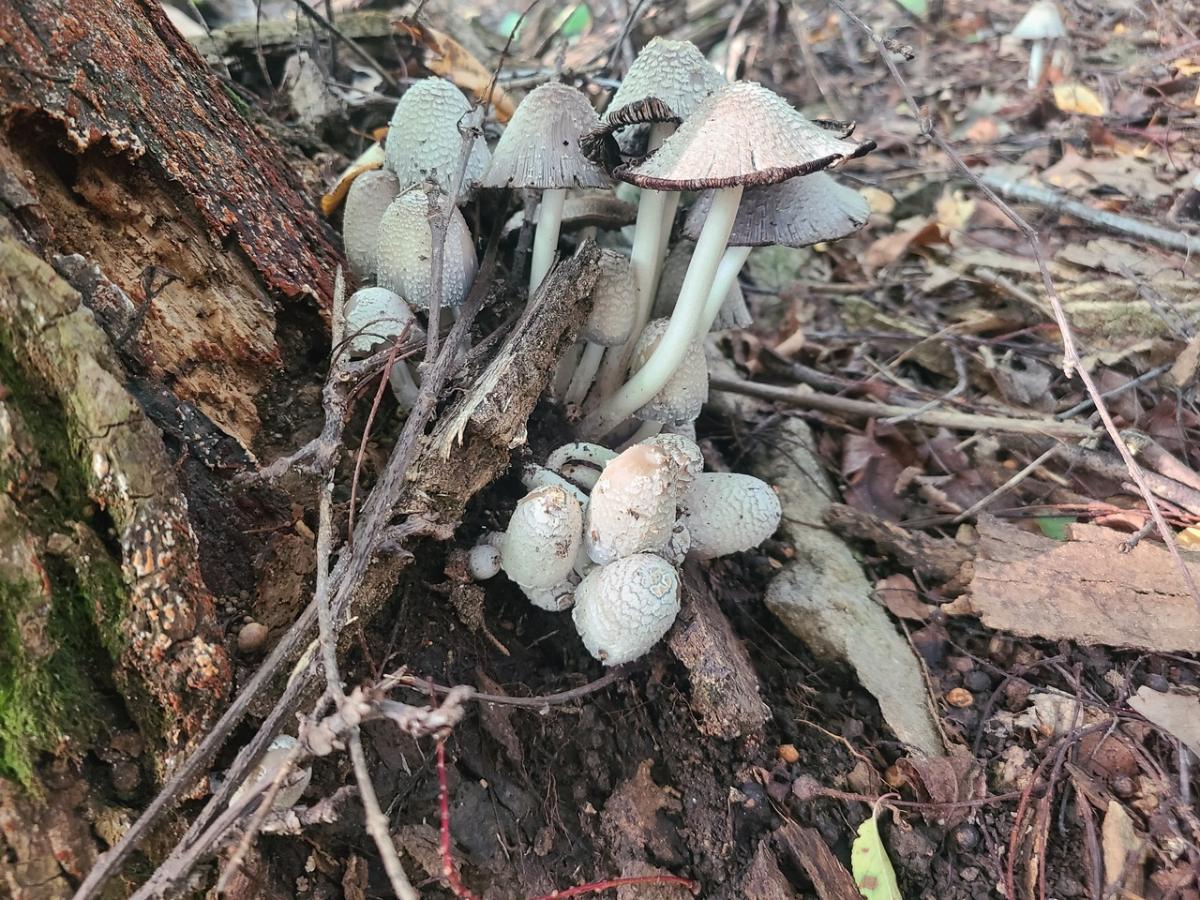
Fairy Inkcap Edibility
The fairy inkcap is edible, but due to its small size and insubstantial flesh, it is not foraged for the table.
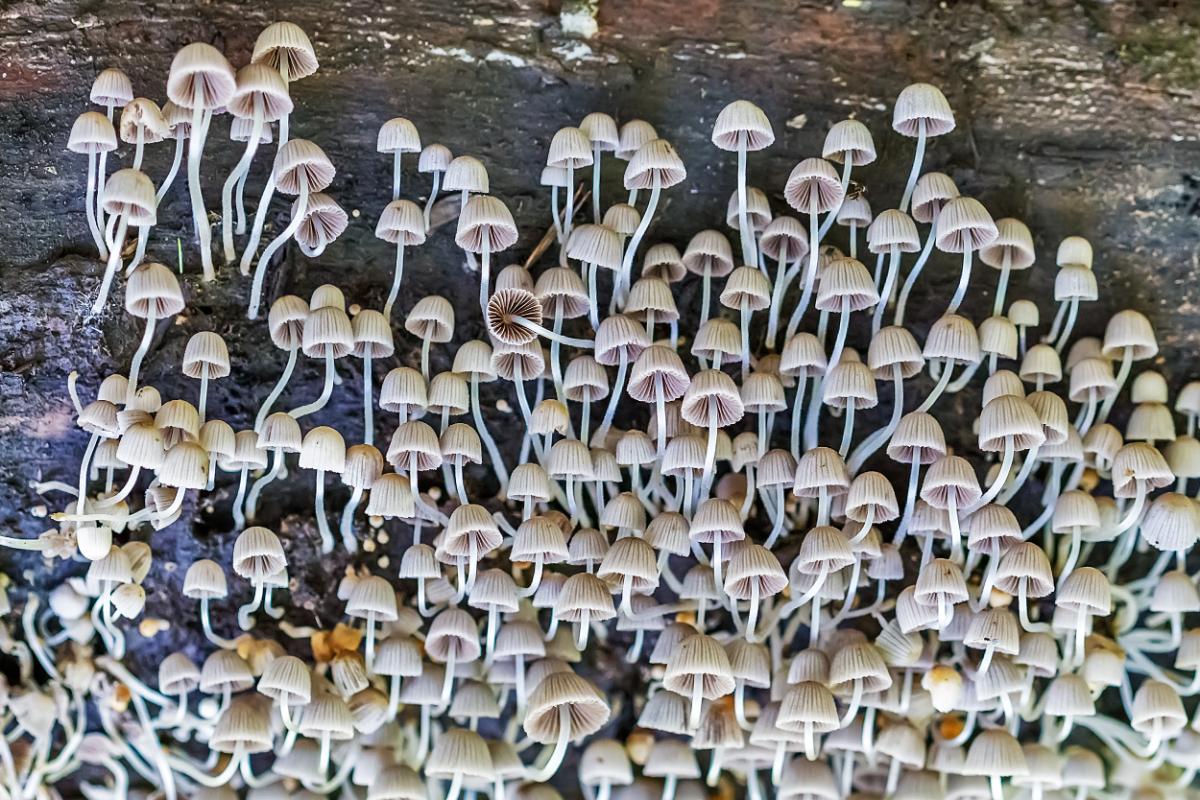
Common Questions About Fairy Inkcaps
Does the fairy inkcap mushroom have medicinal properties?
Currently, the fairy inkcap mushroom has no known medicinal properties.
Is it safe to eat the fairy inkcap mushroom?
The fairy inkcap mushroom is considered edible (it’s not toxic), but it isn’t commonly foraged. Due to its small size, collecting a sufficient quantity for a meal is often viewed as more effort than it’s worth.
Is the Coprinellus disseminatus mushroom toxic?
No, Coprinellus disseminatus, also known as fairy inkcap, is not poisonous.
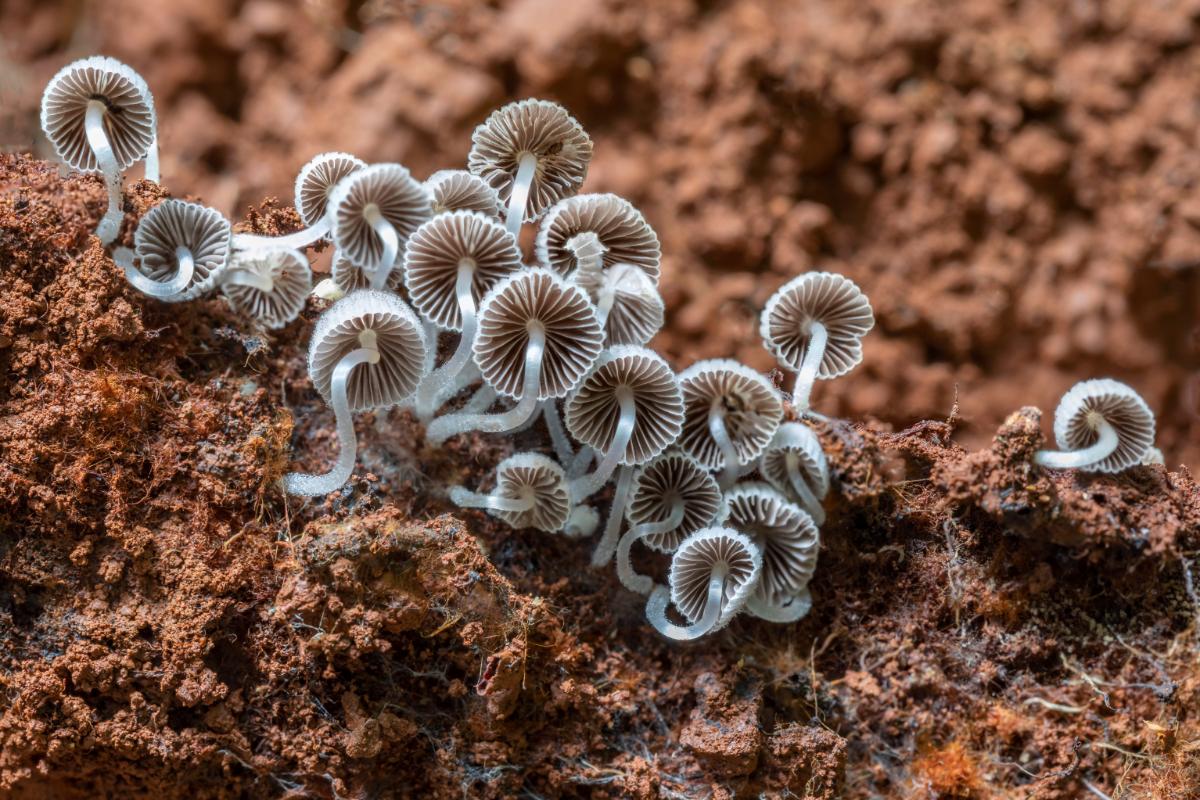





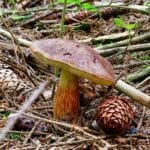
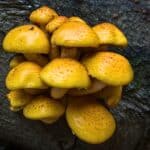
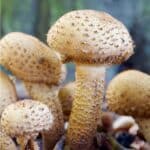
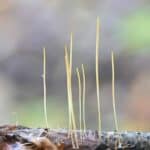
Leave a Reply